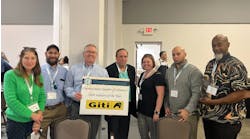Saul Ludwig, managing director of KeyBanc Capital Markets Inc., recently increased his earnings per share estimate for Goodyear Tire & Rubber Co. to $2.20. That compares to $1.43 in 2007.
Subsequently, he has maintained the "Buy" rating for the company's stock. However, that does not mean there aren't challenges ahead for Goodyear.
The challenges are as follows, according to Ludwig.
* Surging raw material costs. On July 1, several raw material suppliers implemented sharp price hikes. Goodyear's raw material costs increased 8.5% in the second quarter of 2008 compared to 2Q 2007; Ludwig estimates increases of 20% and 26%, respectively, for the third and fourth quarters.
(Goodyear announced price increases on Aug. 6 -- up to 10% on consumer and truck tires, up to 7% on OTR tires. They will go into effect Sept. 1.)
* Drop in volume in North America. The decrease in volume since 2000 has been dramatic. Some of it was intentional, such as eliminating a lot of its private label business. Some of it "is probably hard core share loss to the likes of Michelin, Bridgestone and imports."
* Excess capacity. Goodyear has capacity to produce about 90 million tires in the United States and Canada; its estimated sales for North America this year is 72 million tires this year.
Closing another plant in North America if volume does not significantly improve might be an option, hypothesizes Ludwig. "We are confident that CEO (Bob) Keegan will take the appropriate actions to ensure that capacity is aligned with demand."
* Cost savings vs. costs. Although Goodyear has made great progress toward achieving its more than $2 billion cost savings goal by the end of 2009, those savings "continue to be eaten away by inflation, transitional manufacturing costs and a plethora of 'other' costs, including its retail store weakness, lower results in other non-tire businesses and unabsorbed overhead in Europe, as well as some one-time items such as a strike in Turkey... and a wage settlement in France (both in the second quarter)."
The cost savings should find their way to the bottom line eventually, says Ludwig, but probably not for the immediate future.
* Soft tire industry volume, both at the original equipment and replacement levels.
* China plant. Goodyear recently announced that it will spend $500 million to relocate and build a new tire plant in China to serve the local market. It is a good move, says Ludwig -- but is it too late?
"There are already several competitive plants under construction or expanding in China. In our opinion, Goodyear should have moved sooner in its Asian and Eastern Europe regions to add modern new capacity, while at the same time considered consolidating several small less efficient plants in places like Taiwan, Malaysia or the Philippines."
* Decrease in European production. Last winter was a very light snow tire season in Europe, so dealers may be "heavy" with
last year's leftover snow tires. Additionally, tire sales in Europe were very weak in June, "and we are concerned that that weakness
will continue through the third quarter as well, thus leading to reduced production schedules for Goodyear."
On the plus side, the company has shown steady improvement in its core operations for the last six quarters. Its balance sheet is strong (equity of $3.4 billion, net debt of only $2 billion) and its international businesses (and most of their markets) are very strong.
"There is still a good chunk of cost savings to fall to its bottom line in North America, when the VEBA (Voluntary Employee Benefit Association) is approved and the company begins to benefit from its large pool of $13/hour workers once the manufacturing transitional costs abate beginning next year," he says. Pension funding and expense also are down sharply, "and so will be post retirement health care costs."

